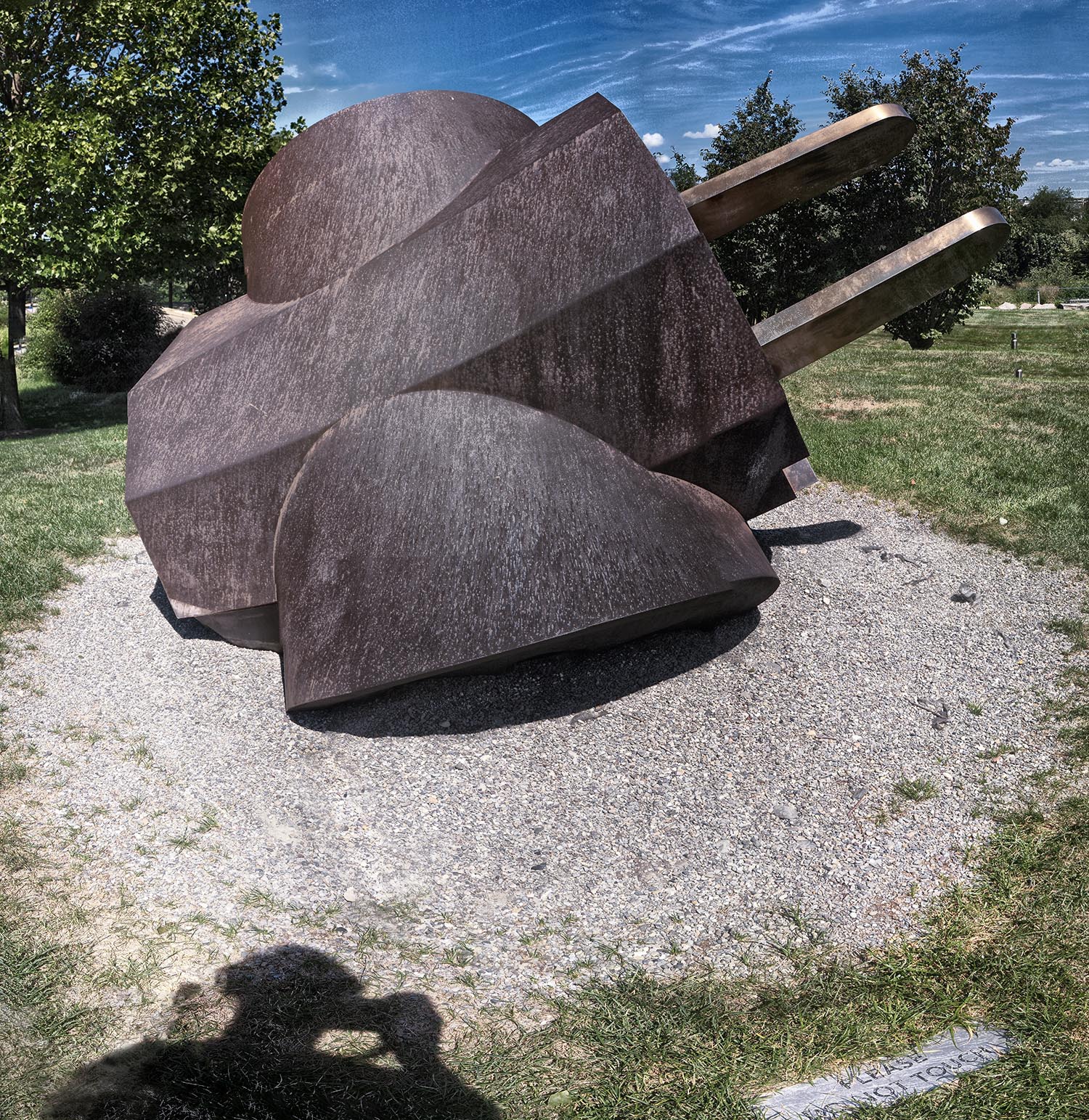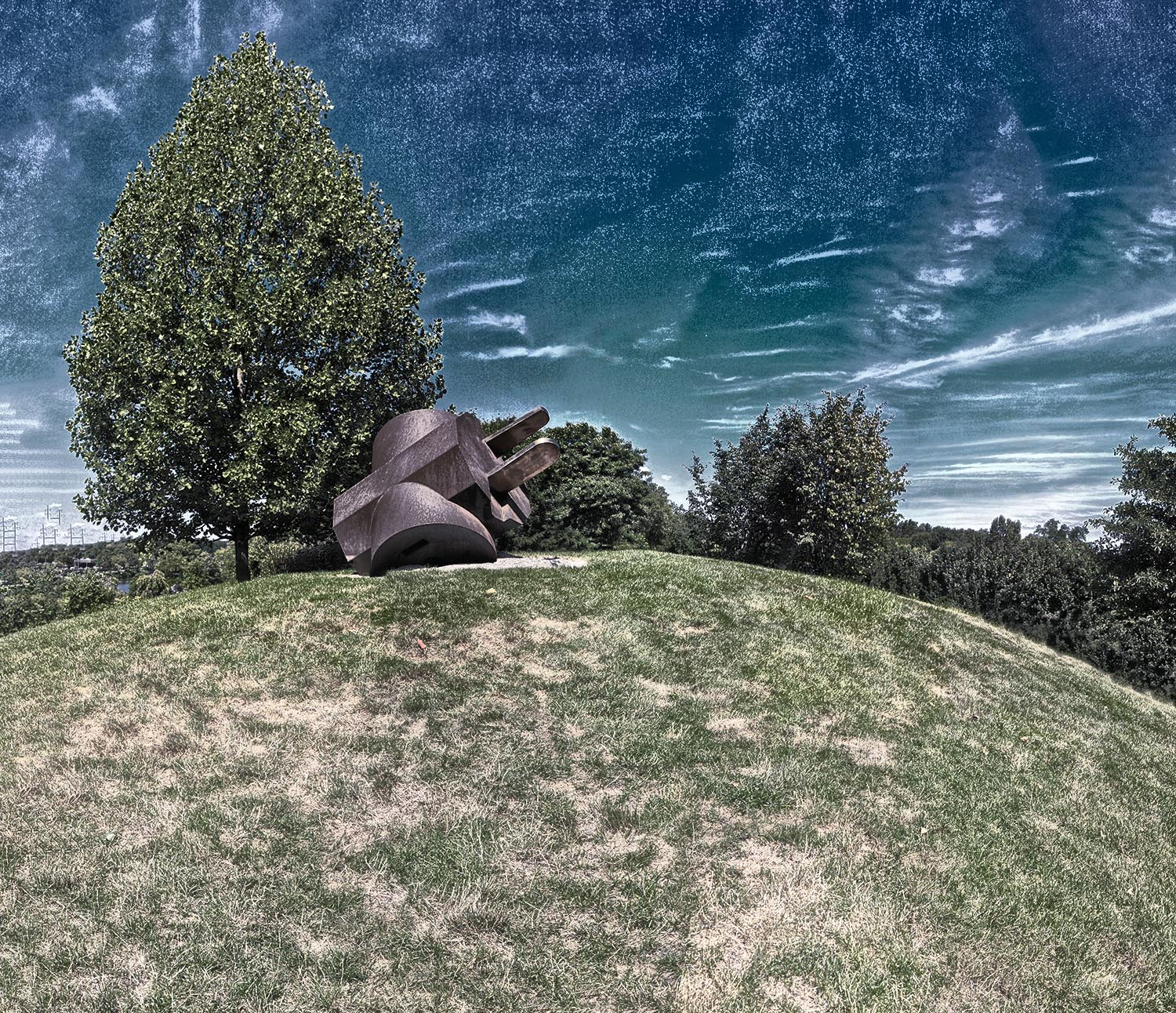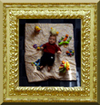A Plug at the Philadelphia Museum of Art 1 & 2: photos by Malcolm Aslett
|
One time, when I was taking a series of photographs of a courtyard, working my way along a wall for a joiner, a scientist friend asked what I was doing. When I told him I was taking several pictures of small parts to put together he asked the simple question: "If you want to show the whole wall in a photo then why don't you just stand further back?" I recall his comment each time I put a photograph together and think the 'joiner component' seems to be lost in the frame of a relatively normal looking picture. Taking more photographs does provide more detail but in the manner of the constructions I do nowadays the actual 'joins' are hard to determine and might be difficult to discern within the overall effect. These two photographs have a bit of that. Another reason one might see them as single snaps is that they are much smaller than the originals so as to be viewed in totallity on a computer monitor and without sizes that require downloads of several minutes. So why don't I step twenty feet back or just use a wide angle to do it in one shot? Because it is different. It's a process. By taking many photographs outward from a point you are 'building' the world afresh and making further choices of inclusion or exclusion and deciding where to stop. Then this process is repeated in constructing an image in Photoshop. I remember my first photography lessons and liked the idea of cropping an image to make it balanced and visually pleasing. Joining photos is perhaps this in reverse. It is impossible to describe all of your feelings for liking a scene or even articulating your hopes for what it will become in a single entity. It is a process of discovery and sometimes one of disappointment. A photographic memory is not the eye. And vice versa. When I put these two images together one of the obvious differences between my original response and the images was the relationship of the plug to the background. The colours and tones were not distinct enough. A giant plug in nature is a distinct thing. Only, the photographs didn't seem to show that division as much as I thought they would. To be mildly technical, what I did then was to create an extra layer in photoshop in which I severely increased the contrast and then made this layer opaque to allow the original image to show through, retaining some of the bright natural colouring. In the process it made the metal more metallic, the grit more gritty and the grass much grassier. The one below also had the clouds turn into a billion stars. At first I went back and tried to quell that sky a bit. As an effect it is misleading. But muting it took away some of the overall stylistic balance so I left it as it was. There are still breadcrumbs of the construction process left. You have to search with the expectaion of finding them. Like the ill-joined bollard to the lower right of the plug prongs in the picture above... |
|
|









